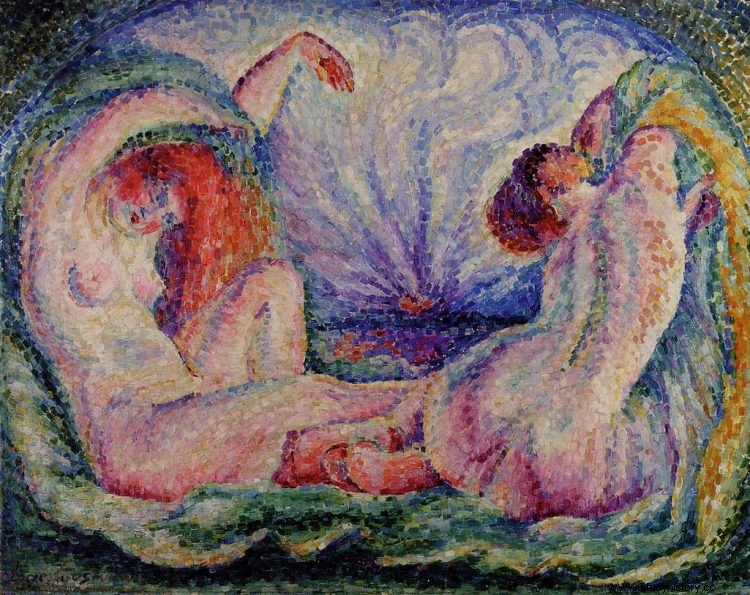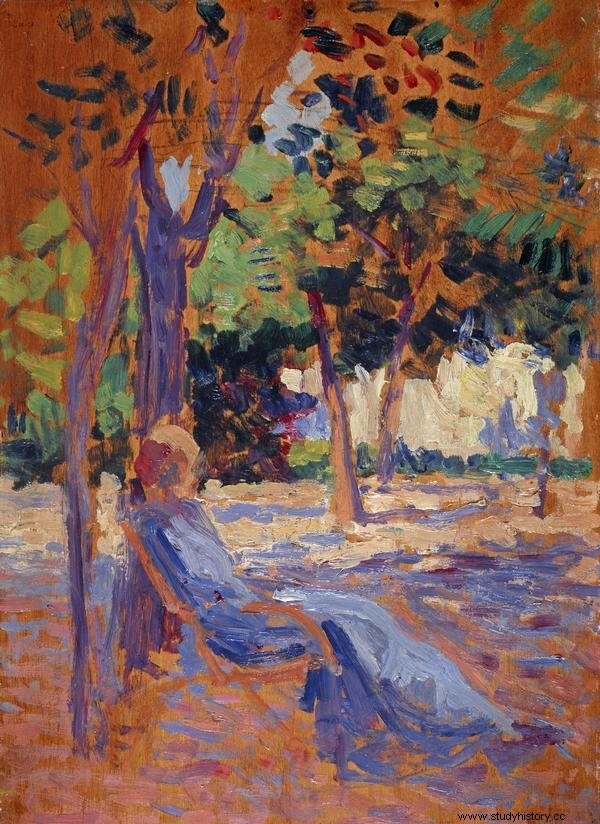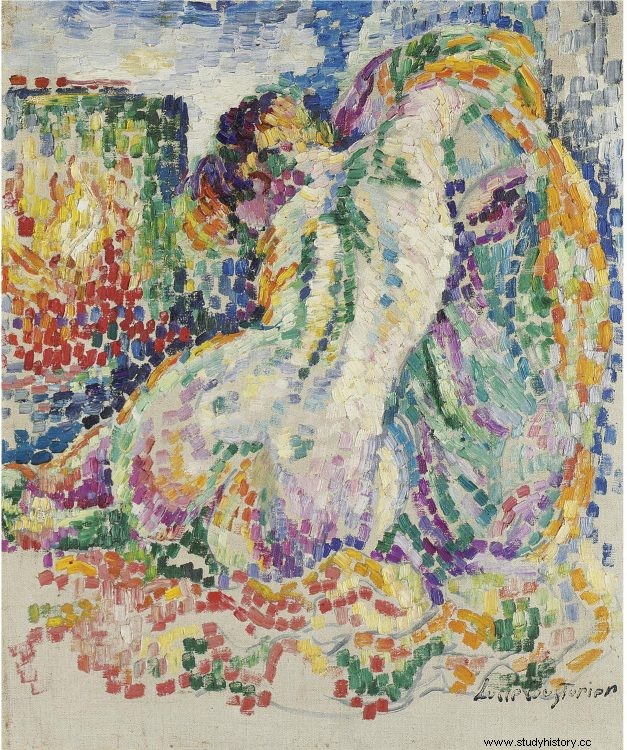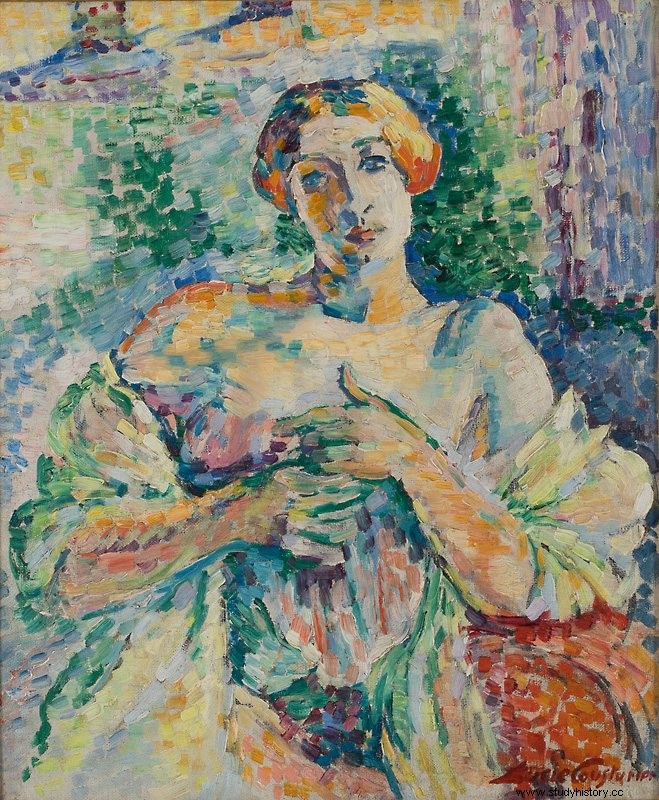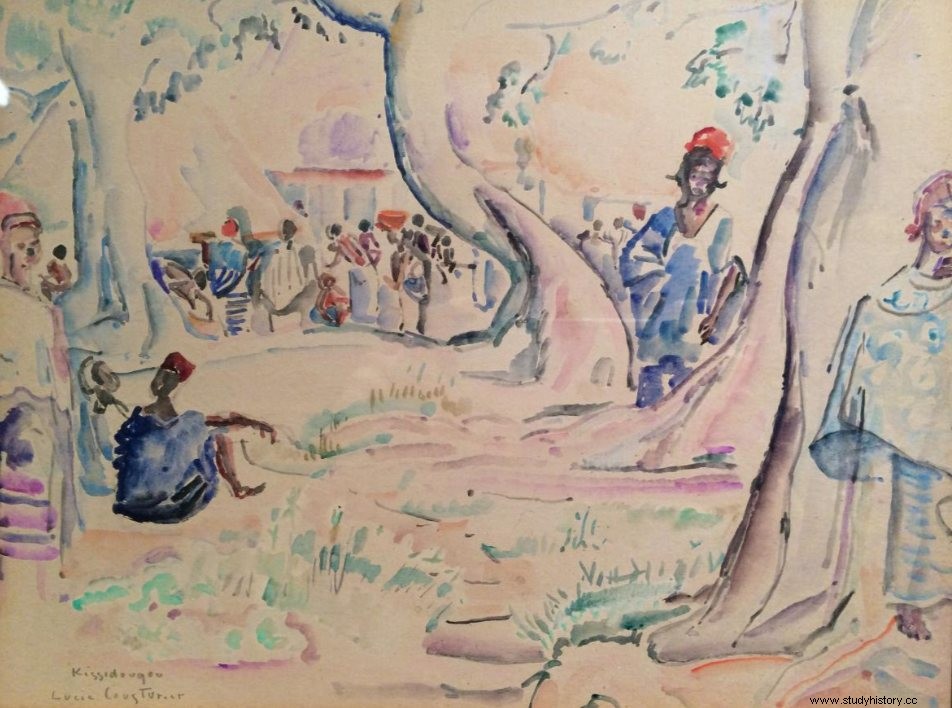French artist, writer and intellectual, Lucie Cousturier (1876 – 1925) is part of the movement of neo-impressionism and pointillism, with her landscapes and luminous outdoor works. A committed woman, she published several works against colonialism.
A young pointillist
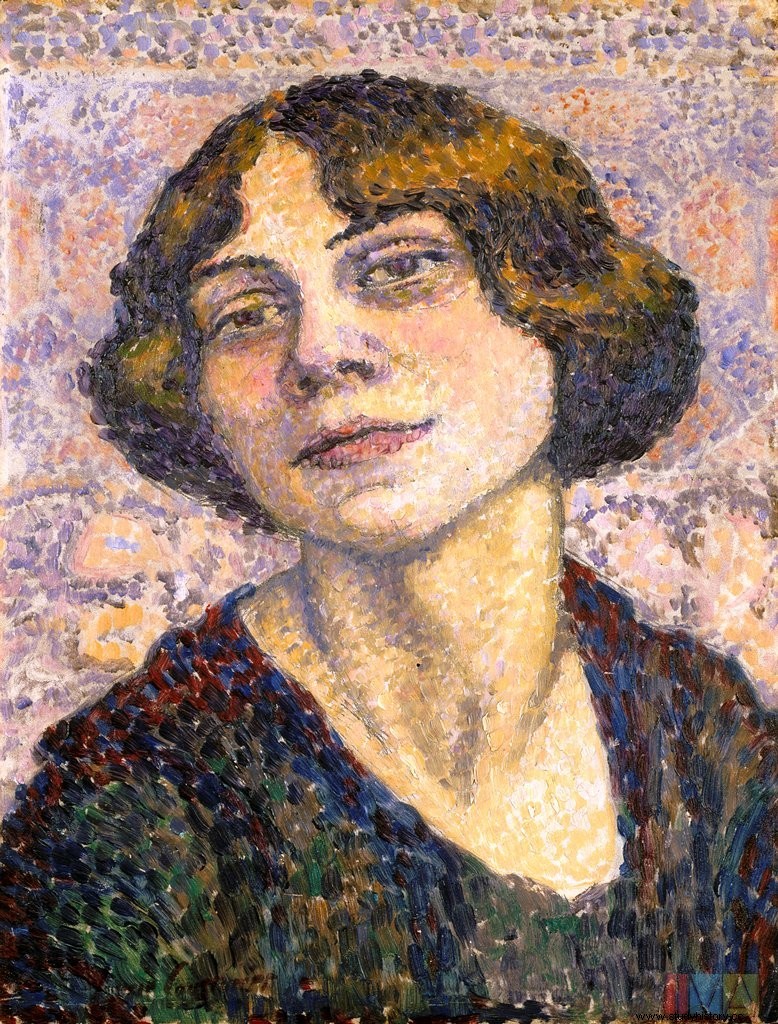
Lucie Cousturier was born as Jeanne Lucie Brû on December 19, 1876, into a wealthy family. His parents made and marketed the first rubber dolls at the Les Poupees Brû factory.
The girl has been interested in painting since adolescence. She studied with the neo-impressionist and pointillist painters Paul Signac and Henri-Edmond Cross; she also became friends with the artist Georges Seurat. Signac and Seurat in particular took a divisionist approach to painting, separating the tones of paintings into many small, constricted patches of color so that the eye perceived them as a unit.
At their side, Lucie learns the technique of pointillism and inscribes her art in this artistic movement. She paints in tones that are sometimes subtle, sometimes dazzling in the style of Fauvism.
First exhibitions
In 1900, Lucie married Edmond Cousturier, art critic and painter, with whom she had a son the following year. The year 1901 was also the year of her first exhibition:Lucie presented works for the first time at the Salon des Artistes Indépendants. His art received the admiration of his contemporaries; Signac, in particular, believes that she is wonderfully gifted. Subsequently, she exhibited between three and eight paintings each year.
Lucie also participates in group exhibitions in Brussels and Berlin, perfecting year after year her mastery of technique and colors and developing greater artistic freedom. In 1907, she held her first personal exhibition in Paris, at the gallery owner Eugène Druet; she reveals in particular paintings of landscapes made in the open air. Gradually, she also learned the art of watercolour.
Not content with painting, Lucie devotes time to writing and composes articles and works on certain key artists of Neo-Impressionism.
Strangers in my house
When the First World Warrior broke out, Lucie Cousturier moved to Fréjus, in the south of France. She paints outdoors portraits, still lifes, or even landscapes radiating with southern light.
Above all, she meets Senegalese skirmishers there, whose camps are set up near her home and who spend some time there before joining the front. Believing that the learning of French in the military camps is not up to par, she organizes language and literacy classes at home, and befriends several of her students. She will draw the book Strangers at my house , published in 1920.
Anti-colonialist
After the end of the war, Lucie Cousturier decided to go to French West Africa – bringing together eight French colonies in Africa -, in particular to visit some of her former students. She is also commissioned by the French State to study local populations and in particular the influence of the mother on the education of children. Lucie spends seven months traveling in West Africa, living with the natives and making friendships; she returns with sketchbooks, a diary, and firm anti-colonialist convictions.
On her return, Lucie published several works questioning the relations between Africa and Europe and criticizing colonialism:La forêt du Haut-Niger (1923), My strangers at home, my friend Fatou, city dweller (1925), My friend Soumaré (1925). She also began to collaborate with the newspaper Le Paria, “organ of the oppressed peoples of the colonies”; she is one of the first French intellectuals to write on the subject.
Lucie Cousturier died in Paris in June 1925, at the age of 48.

